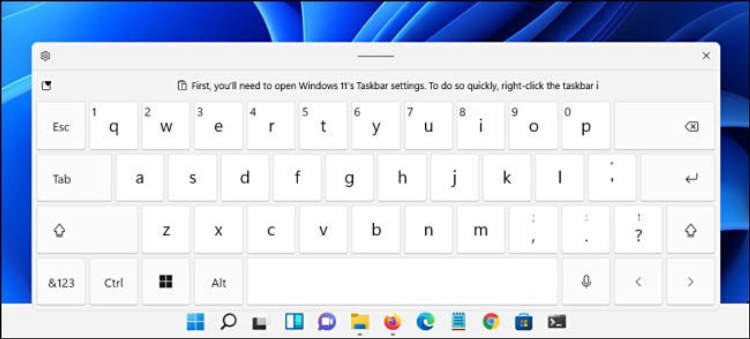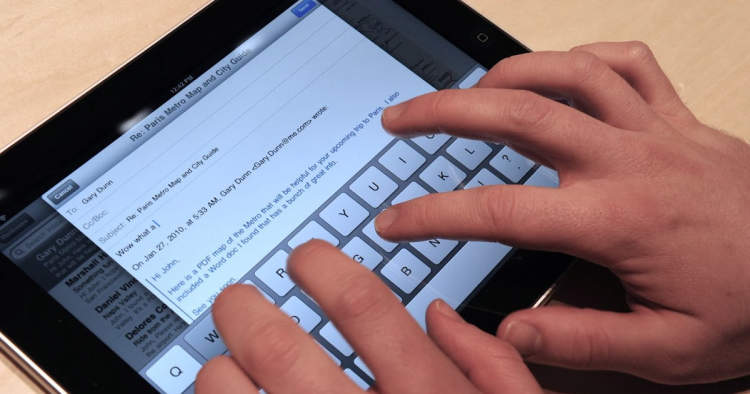In this digital age, laptops have become an integral part of our lives. With the advancement in technology, many laptops now come equipped with touch screen keyboards, offering a more interactive and convenient typing experience. If you are new to using a laptop touch screen keyboard or simply want to enhance your skills, this article is here to guide you through the process.
First and foremost, it is important to understand the basic mechanics of a laptop touch screen keyboard. Unlike traditional physical keyboards, touch screen keyboards are displayed directly on the laptop’s screen. To access the touch screen keyboard, simply tap on the keyboard icon located in the taskbar. Once the touch screen keyboard appears, you can start typing by directly tapping on the virtual keys.
Introduction to Laptop Touch Screen Keyboard
In today’s digital age, the laptop touch screen keyboard has become a popular feature that enhances the user experience. With the advancement in technology, laptops now come with a touch screen option, providing users with a unique way to interact with their devices.
Gone are the days when keyboards were limited to physical buttons. The touch screen keyboard allows users to type directly on the screen using their fingers or a stylus, providing a more intuitive and tactile experience.
Benefits of a Laptop Touch Screen Keyboard
There are several advantages to using a laptop touch screen keyboard:
- Portability: Laptops with touch screen keyboards are generally compact and lightweight, making them easy to carry around.
- Convenience: The touch screen keyboard eliminates the need for an external keyboard, saving space and reducing clutter.
- Flexibility: The touch screen keyboard can be customized based on the user’s preferences, allowing for personalized layouts and arrangements.
- Intuitiveness: Typing on a touch screen keyboard feels more natural as it mimics the experience of typing on a smartphone or tablet.
- Multi-touch capabilities: Some touch screen keyboards support multi-touch gestures, allowing users to perform various actions like zooming in or out.
Understanding the Functionality
The laptop touch screen keyboard operates similarly to a physical keyboard, but with a few key differences:
- Type Pressure: Unlike physical keys, the touch screen keyboard registers input based on pressure applied, which may take some getting used to.
- Virtual vs. Physical Feedback: The touch screen keyboard lacks tactile feedback, so users need to rely on visual and audio cues to ensure accurate typing.
- Gesture Controls: In addition to typing, touch screen keyboards often offer gesture controls, allowing users to navigate and interact with their laptops effortlessly.
- Accessibility Features: Some touch screen keyboards come with accessibility features like predictive text, auto-correct, and customizable keyboard layouts for individuals with specific needs.
With these features and functionalities, the laptop touch screen keyboard provides a versatile and efficient input option for laptop users.
Steps to Enable the Laptop Touch Screen Keyboard

Using the touch screen keyboard on your laptop can be a convenient and efficient way to type, especially when you’re using a touchscreen device or when your physical keyboard is not working. Follow these steps to enable the touch screen keyboard on your laptop:
-
Step 1: Access the Device Settings
Click on the “Start” button and select “Settings” from the menu. Alternatively, you can press the “Windows key + I” to open the settings directly.
-
Step 2: Go to the “Ease of Access” settings
In the settings window, click on “Ease of Access” or “Ease of Access Center” (depending on your Windows version).
-
Step 3: Enable the Touch Keyboard
In the Ease of Access settings, click on “Keyboard” from the left-hand menu. Then, toggle the switch next to “Use the On-Screen Keyboard” to enable the touch screen keyboard.
-
Step 4: Adjust Additional Settings (Optional)
If you’d like to customize the touch screen keyboard settings, click on “Options” under the touch keyboard section. Here, you can adjust various options such as the keyboard layout, size, transparency, and more.
-
Step 5: Use the Touch Screen Keyboard
Once enabled, you can access the touch screen keyboard by clicking on the keyboard icon that appears in the system tray or by pressing the Windows key + Ctrl + O shortcut.
By following these simple steps, you can easily enable and use the touch screen keyboard on your laptop. Enjoy the convenience of typing using the touch screen interface!
Tips and Tricks for Using the Laptop Touch Screen Keyboard
The laptop touch screen keyboard is a useful feature that allows you to type directly on the screen instead of using a physical keyboard. Here are some tips and tricks to help you optimize your experience:
- 1. Adjust the keyboard sensitivity: Take some time to adjust the keyboard sensitivity to suit your typing style. This will help minimize typing errors and improve your overall speed and accuracy.
- 2. Take advantage of gesture typing: Most touch screen keyboards support gesture typing, where you can swipe your finger across the keyboard to form words. It’s a faster and more efficient way to type, especially if you’re comfortable with it.
- 3. Enable auto-correct: Auto-correct can be a lifesaver, especially when typing on a touch screen keyboard. Make sure to enable this feature to automatically fix common typos and spelling mistakes on the go.
- 4. Use the split keyboard: Many touch screen keyboards offer a split keyboard mode, which divides the keyboard into two halves for easier thumb-typing. This can be particularly useful when using your laptop in tablet mode.
- 5. Customize your keyboard layout: Some touch screen keyboards allow you to customize the layout based on your preferences. Experiment with different layouts to find the one that works best for you.
- 6. Utilize keyboard shortcuts: Just like a physical keyboard, touch screen keyboards often have built-in keyboard shortcuts for common tasks. Familiarize yourself with these shortcuts to enhance your productivity.
By implementing these tips and tricks, you can make the most out of your laptop touch screen keyboard and improve your typing experience. Remember to practice and experiment to find the methods that work best for you.
Conclusion
The touch screen keyboard on laptops has become an essential feature that offers convenience and versatility to users. With its tactile feedback and intuitive design, it has made typing on a laptop more efficient and user-friendly.
Not only does the touch screen keyboard eliminate the need for an external physical keyboard, but it also allows users to utilize gestures and multi-touch functionality. This enhances the overall user experience, particularly for tasks such as navigating through menus, zooming in and out, or even drawing on the screen. With its increasing popularity and continuous improvement in touch sensitivity, the laptop touch screen keyboard is undoubtedly revolutionizing the way we interact with our devices.

